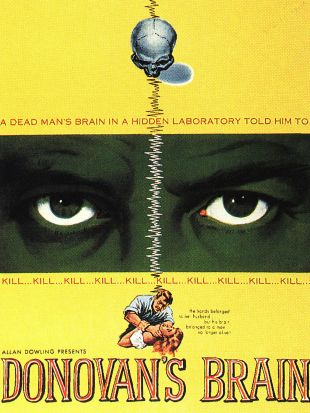A horror director of the late '50s and early '60s, Boston-born Herbert L. Strock created a string of fondly remembered sci-fi thrillers and horror shockers during the heyday of low-budget chillers. Strock entered the movie business shooting newsreels for Fox Movietone News. Following service during WWII, he returned to the movie business as an editor, initially at MGM and later at Hal Roach Studios, where he also directed some early filmed television, including episodes of Sky King. He was working at Roach when independent producer Ivan Tors brought in his production of a film called The Magnetic Monster. Tors hired Strock as the editor on the movie and, when director Curt Siodmak quit the picture in a dispute with the producer, Tors engaged Strock as the director. The film's star (and co-producer) Richard Carlson was so pleased with Strock's work, that he arranged to hire him as the editor of his next feature, Riders to the Stars, and to direct the scenes in which Carlson -- who was also directing the movie -- appeared onscreen. Ironically, Strock had impressed two producers sufficiently to get bumped up to the director's chair (and into the directors guild) in two successive feature films, yet hadn't gotten credited as director for either one. His first directorial credit came with the sci-fi/espionage chiller Gog (1954), one of a handful of color science fiction films of its era, which was also shot in 3-D (although only released flat). The film was filled with striking images of both murder and mechanically based mayhem, but also of scientific devices at work; it was a success at the time and has become something of a cult classic along the lines of The Fly and This Island Earth (and some scholars and enthusiasts still talk about retrieving the 3-D elements to get it released in that format).
With that credit behind him, Strock moved into more conventional film subjects, including the action pictures Storm Over Tibet and Battle Taxi, and also returned to work with Ivan Tors again on the anthology series Science Fiction Theater (1955), as well as directing installments of such Warner Bros. television series as Cheyenne, Colt .45, and Maverick, and the Ziv-TV series Highway Patrol and Men Into Space. By 1957, he was well known in the industry as a filmmaker capable of delivering action and thrills within low budgets. Strock was engaged by producer Herman Cohen to work on I Was a Teenage Frankenstein (1958), a cross-breeding of the teen exploitation and monster movie genres. He coaxed earnest performances out of veteran players like Whit Bissel and Phyllis Coates, only to see the audiences and critics mostly respond to the campy lines added by Cohen, such as when Bissell's Dr. Frankenstein telling the newly animated monster, "I know you have a civil tongue in your head -- I sewed it there!" Although the director didn't get along well with Cohen, they made two subsequent movies together, Blood of Dracula (1958), with its startling lesbian overtones in a story about a troubled schoolgirl transformed into a monster by her sadistic teacher; and How to Make a Monster (1958) (which Cohen wrote), in which a movie studio makeup man (Robert H. Harris), with a grudge against the studio's management, uses a chemical additive to convince the actors wearing his monster makeup that they are the real article, and sends them after his chosen victims. The director returned to television for several years, working on episodes of 77 Sunset Strip and Bonanza, among other programs. His next film credit, The Devil's Messenger, was actually edited together from installments of a failed television series, but found an audience among suspense and horror fans for its disconcerting elements. By 1963, however, Strock seemed to have run out of luck where films, scripts, and subjects were concerned -- The Crawling Hand was an awful mess about an astronaut's deadly disembodied hand. It sort of anticipated Oliver Stone's feature-film debut, The Hand, but it did nothing for Strock, who only directed three more movies over the next 16 years, each either for television or aimed at the B-action and horror circuits, where they passed unnoticed.


